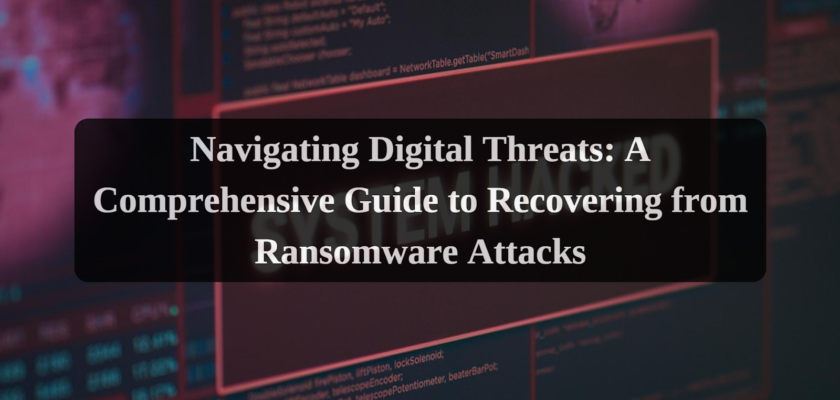Ransomware is a serious threat to both individuals and organizations. This malicious software encrypts victims’ data, holding it hostage until a ransom is paid — often without any guarantee of actual recovery. Understanding the nuances of ransomware attacks and recovery strategies is essential in today’s digital threat landscape.
Understanding Ransomware
Ransomware is a sophisticated malware program that uses encryption to block users’ access to their data or systems, demanding a ransom for a decryption key. The consequences of an attack extend far beyond data unavailability and can lead to significant financial losses, disruptions, and reputational damage.
Types of Ransomware Encryption:
- Symmetric encryption: The most common form, in which the same key encrypts and decrypts information.
- Asymmetric encryption: A more complex form that uses two keys — an open key for encryption and a private key for decryption.
Common Delivery Methods:
- Phishing attacks: Malicious emails disguised as legitimate messages trick users into clicking on compromised links or downloading infected attachments.
- Exploitation of software vulnerabilities: Unpatched software can become an entry point for ransomware.
- Social engineering: Manipulative tactics deceive people into disclosing sensitive information or providing system access.
Learn more about these types of encryption
Detecting Ransomware Infection:
There are a number of signs that may indicate that your computer is infected with ransomware, including:
- The appearance of files with extensions such as .lock, .crypt, .exe, .rar, .zip, etc. These extensions are commonly used by ransomware to identify encrypted files.
- The inability to open files that have been encrypted. If you attempt to open a file that has been encrypted by ransomware, you will see an error message.
- The appearance of ransom messages. These messages typically contain instructions on how to pay the ransom and obtain a decryption key.
Immediate Response Measures:
Containment:
- Disconnect from the internet to prevent further infection or data transmission.
- Isolate the infected system from the network to prevent cross-infection.
Evidence preservation:
- Document all visible signs of the attack, including ransom demands, suspicious emails, and system changes.
- Preserve any affected equipment for possible forensic analysis.
Recovery Strategies:
Data recovery:
- Ideally, restore affected files from recent, uninfected backups.
- If there are no backups, consider professional data recovery services.
System reinstallation:
In severe cases, a complete system reinstall may be required, underscoring the importance of regular, comprehensive backups.
Decryption tools:
Some cybersecurity firms and law enforcement agencies release decryption tools for certain varieties of ransomware — this is a free recovery option that is worth exploring.
Legal and Ethical Implications of Paying a Ransom:
Paying ransom demands is controversial and potentially incriminating from a legal standpoint. It can fund further criminal activity, encourage future attacks, and offer no guarantee of data recovery. It is recommended to consult with an attorney and cybersecurity experts before making any payment.
Preventive Protection Strategies:
Education initiatives:
Regular training sessions can educate staff about the latest cyber threats and how to prevent them, reducing the likelihood of successful phishing or social engineering attacks.
Comprehensive backup protocols:
Implementing reliable, regular, and redundant backup procedures ensures data availability in the event of an attack.
Continuous software updates:
Keeping all software and systems up to date eliminates known vulnerabilities that can be exploited.
Advanced threat protection solutions:
Use modern antivirus and ransomware protection solutions complemented by firewalls and email filters to enhance security.
Incident response plan:
Develop and regularly update a ransomware incident response plan to ensure an organized and timely response to potential incidents.
Conclusion
Ransomware is a pervasive threat. However, through education, preparation, and informed response strategies, individuals and organizations can effectively mitigate the risks and consequences associated with these malicious attacks.

